
This page details other monarchies from around the world. These ones are not as famous as The House of Windsor or The House of Grimaldi, mostly turning up (if they do) in works and the media from their own countries.
With the January 2024 abdication of Margrethe II of Denmark, there are no longer any incumbent queens regnantnote , i.e. queens reigning in their own right, a situation that hasn't existed for several centuries at least. In Europe specifically, a queen regnant has been sitting on at least one throne from 1833, the accession of Isabel II of Spain, to the aforementioned abdication of Margrethe II in 2024. However, there are currently four female heirs apparent note . i.e. oldest children who cannot be knocked off the first-in-line position by a son being born due to their country's using absolute primogeniture. Leonor of Spain as the oldest of two daughters is heiress presumptive to the Spanish throne and while their system is male-preference, it is unlikely Felipe VI will have any more children.
Africa
Northern Africa
Mohammed VI, King of Morocco

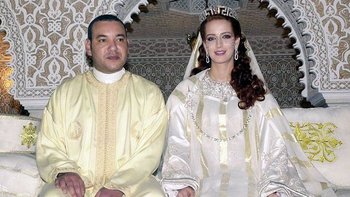
Became king in 1999, and has spent his time trying to modernize his nation. Attempts to reform the law to give women more freedom have ignited the anger of Muslim radicals. He also spent his early reign atoning for his (still well-liked) father Hassan II's heavy-handed and at times brutal rule. The Arab Spring did hit Morocco, but not particularly hard; however, it induced him to initiate constitutional changes that seriously limit the monarch's powers, and has estimated that by the time his son (Moulay Hassannote ) becomes King, the monarch will be a constitutional figurehead.
Despite him being a king, his consort Salma Bennani was styled "Princess" as opposed to "Queen". Speaking of her, in a strange turn of events, after not being spotted by the media between December 2017 and April 2018, it appears that she has divorced the King and gone into hiding.
The Alaouite dynasty is Africa's oldest ruling dynasty, having been ruling Morocco since 1631. It is one of the two ruling Arab dynasties who claim descent from The Prophet Muhammad, through his eldest grandson, Hasan. It is said that some of Hasan's descendants migrated to Morocco during the 12th century under the belief that the presence of a sharif family would bring peace to the region.
Southern Africa
Mswati III, King of eSwatini


Though an absolute monarch with the power to appoint the government or go as far as to change the country’s name, he cannot appoint his own heir. In another unique quirk, the king and his mother, whose title is Indlovukati ("Great She-Elephant"), rule jointly.
Mswati is something of an odd duck due to his indulging in polygamy (with currently fifteen wives) and also attempted to curb the AIDS epidemic by enacting a five year ban on all sex in the Kingdom amongst women under eighteen years of age ... which he then violated by marrying a 17 year old.
Letsie III, King of Lesotho


His kingdom is a constitutional monarchy. Was originally made king in 1990, but abdicated in 1995 to return power to his deposed father, Moshoeshoe II. However, tragedy struck in 1996 when his father was killed in a car accident, and Letsie was once again crowned.
His brother, Prince Seeiso, is close mates with the UK’s Prince Harry, and the two young heirs jointly co-founded Sentebale, a charity set up to ensure the most vulnerable children in Lesotho get the support they need.
Asia
East Asia
Naruhito, Emperor of Japan

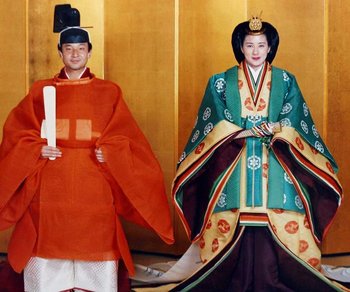
The world’s sole remaining monarch to bear the title “emperor”. Naruhito succeeded his father, Akihito, following his abdication on April 30, 2019. Abdication is an old custom, but it had not been practiced since 1817, making it all the more notable. Since he was born after the enactment of Imperial Household Law of 1947, which abolished the Japanese nobility, Naruhito is the first Japanese monarch to be raised by his parents, not courtiers.
Interested in transportation, specifically water transport; his master's thesis was titled A Study of Navigation and Traffic on the Upper Thames in the 18th Century.
Since Japan has agnatic primogeniture (which excludes females from the line of succession), the next ruler of Japan after Naruhito will not be his daughter Aiko, but his brother Fumihito. Naruhito's wife, Masako, gave birth to Aiko after eight years of marriage, during which she miscarried once. By the time Aiko was born, there was no male born into the royalty since Fumihito's birth in 1965. When it became clear that the princess was in no condition to beget another child after her health deteriorated in 2002 (reportedly because of the pressure she had of having to produce a male heir), the Japanese government proposed a legislation that would change the line of succession from agnatic primogeniture to absolute primogeniture, because the monarchy was projected to become extinct in a few decades, if not shorter, if things were to continue. As noted above, the nobility was abolished in post-war Japan, even though the only way for female royals to retain their title after marriage is to marry: (1) royalty (which means incest) or (2) nobility. Unlike other countries' royalty, Japanese royal women must become commoners if they want to marry one. The proposed change to absolute primogeniture would allow royal women to keep their status regardless of whom they marry. However, it was withdrawn when Fumihito's wife, who previously only had two daughters, gave birth to a son, Hisahito, in 2006. As of 2020, negotiations to amend the succession (or at least allow female royals to keep their titles following marriage) have been partially underway. By this point, there are only three eligible heirs to the throne should Naruhito pass away or abdicate: Fumihito, Hisahito, and the elderly Prince Masahito, Akihito's younger brother, who is married but has no children.
Naruhito is the 126th in a royal line that traditionally dates back to 660 BCE, though historians can only verify the genealogy up to Kinmei, the 29th Emperor (c. 6th century CE). Nevertheless, this is enough to make the Japanese royal family by far the oldest ruling dynasty in the world.
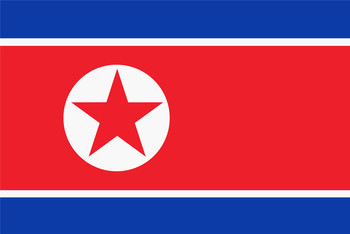
Not officially a royal family or a monarchy, as the country is a "democratic" republic, but the Kim family are the de facto monarchs of the nation, practising hereditary patrilineal primogeniture note . See The Rulers of North Korea for detailed information.
South Asia
Jigme Khesar Namgyel Wangchuck, King of Bhutan

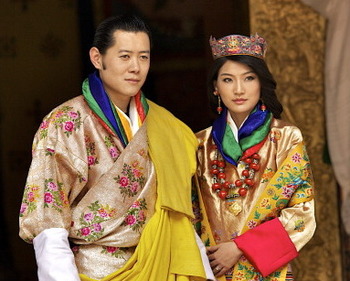
Known in his country as the Druk Gyalpo (Dragon King) of Bhutan, he assumed the throne in 2006 when his father Jigme Singye Wangchuck abdicated in his favour as part of a managed transition to democracy. He has dedicated mainly to promote Buddhism outside his country.
He also seems to be Mr. Fanservice, which became apparent when he assisted the crowning of Vajiralongkorn of Thailand and ended up attracting hordes of female fans (he was nicknamed 'Prince Charming' by the media). His consort, Jetsun Pema, is a breathtaking beauty, and not for nothing are the couple dubbed "The Will and Kate of the Himalayas". Their sons, Jigme and Ugyen, are actively competing with the Wales' children for the title of "Most Adorable Royal Children."
Southeast Asia
Hassanal Bolkiah, Sultan of Brunei

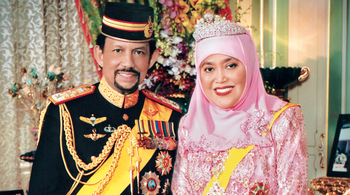
Currently the 29th Sultan of Brunei who has been ruling for over 50 years, making him the longest currently reigning monarch and the longest serving head of state. Is well loved by his subjects for sharing the country's wealth from oil and gas to help the people's welfare.
The Sultan is a Sandhurst graduate, has a large car collection, a private zoo, a banquet hall that holds over 5,000 people, and pays an enormous sum of money to keep a British Gurkha contingent permanently based in his country because he's a fan of them. Also his late father Sultan Omar Ali Saifuddien III and Queen Elizabeth II were good friends.
The Sultan has twelve children, six with his first (and currently only) wife, four with his second wife, and two with his third wife. The heir apparent is Prince Al-Muhtadee Billah, the eldest son by his first wife.
Norodom Sihamoni, King of Cambodia


An accomplished dance instructor and ambassador to UNESCO. He actually has no power, other than being a symbolic figurehead. Became king in 2004 when his father Norodom Sihanouk abdicated. He has no children, but that’s not a problem because since 1993, the King has been chosen by a council from the pool of male descendants of King Ang Duong (1796-1860), even if an heir existed.
Cambodia is a really odd country in that it's a constitutional monarchy in the complete sense, i.e. the king does nothing, but the Prime Minister (Hun Manet) runs a fairly repressive regime. The only other places in modern history where this arrangement lasted any significant amount of time are Fascist Italy, Imperial Japan, and a few stints of dictatorship in Thailand. (Other constitutional monarchies have been authoritarian regimes, of course, but the king tends to have power and not be a mere figurehead.)
Hamengkubuwana X, Sultan of Yogyakarta Sultanate and Governor of Yogyakarta Special Region


Unlike other examples, this monarch rules over a province-sized Special Region instead of the country of Indonesia, which is a republic.
Hamengkubuwana X (pre-regnal name Bendara Raden Mas Herjuno Dapito) became the Sultan of Yogyakarta upon the death of his father, Hamengkubuwana IX (pre-regnal name Gusti Raden Mas Dorodjatun), in 1988. He was democratically elected as the Governor of the Yogyakarta Special Region in 1998, following the death of Paku Alam VIII (himself the prince of the Pakualaman Principality located within the Sultanate), who presided over the position for a decade. Following another decade of negotiations, the "convention" that the titles of Yogyakarta governor and vice-governor are hereditary was made into law by the Indonesian government in 2012.
In 2015, Hamengkubuwana X promulgated a law changing the dynastic succession to be an absolute primogeniture, because he has no son. As a result, the current heir apparent is his eldest daughter, Mangkubumi.
By the way, the Sultan's fourth child, Princess Hayu![]() , is One of Us and runs the Tepas Tandha Yekti, the Sultanate's IT and digital publication department.
, is One of Us and runs the Tepas Tandha Yekti, the Sultanate's IT and digital publication department.
Hamengkubuwana IX was a particularly famous politician in his own right. He and Paku Alam VIII were the first Indonesian royals to send a message of congratulations to President Soekarnonote for his declaration of independence on August 18, 1945, a decision that eventually led the latter to make Yogyakarta an autonomous province within Indonesia. He welcomed the Indonesian revolutionaries when they relocated their base of operations to Yogyakarta following the Dutch occupation of Jakarta, and later served as the Vice-President of Indonesia from 1973 to 1978. He was also the founder of the Indonesian Scouting Movement.
As for the Pakualaman Principality, it is currently ruled by Paku Alam VIII's grandson, Paku Alam X. He is the hereditary vice-governor of the Yogyakarta Special Region. Paku Alam X has two sons, and his eldest, Kusumo Bimantoro, is expected to succeed him upon his death. Like Hamengkubuwana X, Paku Alam X came from the House of Mataram; his great-great-great-great-great-grandfather and the first Pakualaman prince, Paku Alam I, was the sixth of thirty two children born to Hamengkubuwana I (Hamengkubuwana X, meanwhile, is descended from the third child, Hamengkubuwana II). If you ask why the polities divided, you can blame the Dutch and British for that; they deliberately sowed discord to the royal house of Mataram during the early 19th century that eventually caused the two sons to clash and separate.
The Yogyakarta Sultanate and the Pakualaman Principality are two of the four remnants of the Mataram Sultanate, which existed from 1586 to 1755. The other two remnants are the Surakarta Sunanatenote (currently ruled by Pakubuwana XIII) and the Mangkunegaran Principality (currently ruled by Mangkunegara X), both located in Surakarta. Their respective first monarchs were all descended from Amangkurat IV, the eighth Mataram Sultan. Like Yogyakarta, Surakarta was initially accorded the status of a Special Region in Indonesia's 1945 constitution, but it only lasted for a year before it was revoked, thanks to the strong anti-monarchist movement in the city. The Surakarta royals remain, but they, like dozens of other pre-colonial Indonesian royals, do not have the same privileges and political power that the Yogyakarta royals enjoy.
Ibrahim Iskandar, King of Malaysia


Actually, his title is Yang di-Pertuan Agong, meaning 'He who is made Lord'. Full name Sultan Ibrahim ibni Almarhum Sultan Iskandar.
The Malaysian monarchy is unique because the king is elected by the Conference of Rulers consisting of the nine hereditary rulers of the Malay states and is rotated on a five-year period basis. Ibrahim Iskandar is from the State of Johor, having succeeded Abdullah of Pahang in 2024, and, while the successor has not been officially designated yet, it is expected that Nazrin Shah of Perak will succeed him in 2029. He is mostly a ceremonial ruler, though he does have the power to appoint a Prime Minister whom he believes commands loyalty from the Parliament. While past kings rarely used this power, Abdullah of Pahang notably exercised this right a few times following the 2018 collapse of the United Malays National Organisation, which had ruled Malaysia since its independence.
Rama X, King of Thailand


All kings of Thailand in the Chakri dynasty are called "Rama", adopted from the Hindu god Rama. The newest Rama, Rama X (Vajiralongkorn), succeeded his wildly popular father, Rama IX (Bhumibol Adulyadej), who ruled for 70 years.
His great-great-grandfather, Rama IV (Mongkut) was the subject of the musical and film The King and I.
He did not immediately become king when his father died on October 13th, but requested time to mourn and only officially took the throne a month and a half later on December 1st. He is seen as eccentric and does not have the widespread adoration that his father held. Which is rather understandable; because Bhumibol ruled for so long, by the time of his death, he was the king as far as the population's concerned, and they couldn't imagine anyone else being in the throne (similar to how Elizabeth II was the monarch of the United Kingdom).
Prior to his ascension, the King was married to three women, all ending in divorce. With his first wife, Soamsawali Kitiyakara, he had one daughter, Princess Bajrakitiyabha, who is, as of 2022, in a coma due to a heart condition. With his second wife, Thai actress Sujarinee Vivacharawongse, he had a daughter and three sons, who would have been candidates to the throne. However, Vivacharawongse and her children were banished from Thailand after she divorced Vajiralongkorn in 1996, and they were subsequently written out of the succession. The heir presumptive is Dipangkorn Rasmijoti, the only son of Vajiralongkorn with his third wife, Srirasmi Suwadee.
In 2019, he became the first king of Thailand in almost a century to practice polygamy, after he appointed an army officer and his longtime mistress Niramon Ounprom (regal name Sineenat) as his noble consort alongside his fourth wife, Suthida Tidjai. Then he abruptly stripped her of her position later the same year, citing her alleged "conflict and disrespect" towards Queen Suthida. And then her titles were restored as if nothing ever happened.
He is believed to be the wealthiest monarch in the world, with an estimated net worth of ฿1.44 trillion (the equivalent of US $43 billion).
West Asia
You will see that these Arab monarchs usually have 'Al Something' in their name. That is the name of the house: Āl is Arabic for 'House' or 'Clan', and is different from Al- (a prefix, not an independent word, that means 'the').Hamad bin Isa Al Khalifa, King of Bahrain


Previously an emirate, Hamad proclaimed Bahrain as a kingdom in 2002.
The House of Khalifa is Sunni Muslim, but most Bahrainis are Shia. While this was not a major problem for most of the country's history, it became increasingly polarized since The Arab Spring, which saw mostly Shia protesters demonstrating to demand better rights. Suspecting Iranian involvement, the king called in mercenaries and troops from Saudi Arabia to defuse the protests by any means necessary. As a result, the monarchy remains, but its standing among the Bahraini streets has been tarnished. Curiously, most do not have a problem with Hamad himself; the problem is with the rest of his government.
Abdullah II bin Al-Hussein, King of Jordan

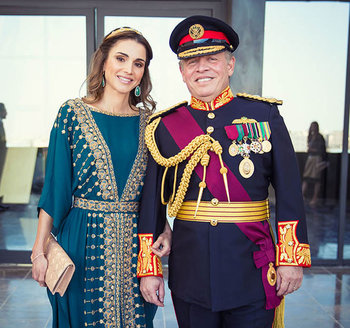
Son of Hussein II and his English second wife. Retains significant power in his native country, but the monarchy is constitutional and he shares some power with Parliament, but like Mohammed VI of Morocco, he expects to be the last monarch with real power. An avowed nerd, he once guest-starred in Star Trek: Voyager.
While the Constitution of Jordan designates the succession to be agnatic primogeniture, the King himself can choose the heir apparent from his brothers or nephews if it pleases him. There have been two instances of brothers being chosen over sons, though in both of these times, they ended up not happening.note
Alongside Morocco, the Hashemite dynasty claim descent from the Prophet Muhammad through his eldest grandson, Hasan. They were a cadet branch of the Qatadids, who ruled Mecca from 1201 until they were deposed by the House of Saud in 1925. Hussein bin Ali, the penultimate Qatadid ruler of Mecca, was the father of the first king of Jordan, Abdullah. Another of Hussein's sons, Faisal, ruled Syria for four months in 1920 before being deposed by France and subsequently resettled as King of Iraq (then a British vassal) in 1921. The Hashemites continued to rule Iraq until 1958, when they were deposed during the July Revolution that killed Faisal II (the elder Faisal's grandson), leaving Jordan as the last Hashemite monarchy.
Mishal Al-Ahmad Al-Jaber Al-Sabah, Emir of Kuwait
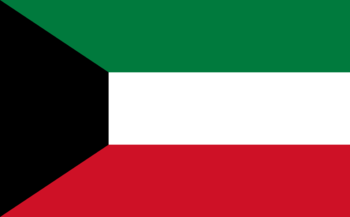

He succeeded his half-brother, Nawaf, upon his death in December 2023. Mishal is Kuwait's third Emir in three years; Nawaf had only ascended to the throne in 2020 following the death of another half-brother, Sabah. Mishal is the seventh son of Ahmad Al-Jaber, who was the longest-reigning monarch of Kuwait (he reigned from 1921 to 1950, albeit not as an Emir, since Kuwait was ruled by the United Kingdom at the time), and is Ahmad's fourth son to succeed the throne, following Jaber, Sabah, and Nawaf.note A graduate of the Hendon Police College, Mishal is best known for his security appointments prior to becoming an Emir. He has been Kuwait's de facto ruler since 2021, after Nawaf retreated from the public because of health issues.
He has the right to appoint and dismiss his government, but he himself is subject to the National Assembly, one of the most powerful parliaments in the Arab world.
Haitham bin Tariq Al Said, Sultan of Oman

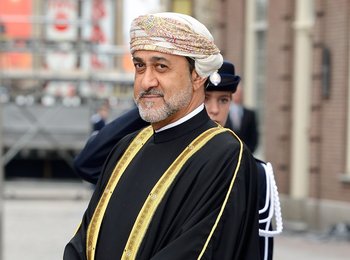
He was unanimously elected as sultan by the royal council a day after the death of his long-reigning predecessor and first cousin, Qaboos bin Said, who had no children and never publicly designated an heir during his 49-year-long reign. Contrary to Qaboos, Haitham has since promulgated a law that designates the sultan's oldest son to be crown prince. Previously, he was the Minister of Heritage and Culture and before that was Minister of Foreign Affairs. Has been described as a sports enthusiast.
The House of Said's cadet branch ruled Zanzibar from 1856 to 1964, when it was deposed and the people of Zanzibar voted to join the Republic of Tanganyika in mainland Africa, creating Tanzania.
Tamim bin Hamad bin Khalifa Al Thani, Emir of Qatar


He took crown after his father Hamad bin Khalifa abdicated in favour of him in 2013. His reign saw the boycott of Qatar in 2017 by Bahrain, Egypt, Saudi Arabia, and the United Arab Emirates, all of which accused Qatar of "supporting terrorism" by advocating for political Islam,note chiefly the Muslim Brotherhood, which many Arab governments had blamed for fanning the Arab Spring, and cozying up to Iran, their archenemy. The boycott ended in 2021, though it is expected that Qatar will continue to assert its political independence owing to its nearly four-year isolation in the region.
Salman bin Abdul-Aziz Al Saud, King of Saudi Arabia


Son of Abdulaziz, who created the modern Arabian state in 1902, King Salman is the sixth of his 65 children to rule the largest Arab monarchy in the world today. Unlike most other examples on this list, most of which are constitutional monarchies where the monarch has limited effective power, Saudi Arabia is an absolute monarchy, and Salman has sweeping powers over the government, though he rarely performs his duties directly nowadays, due to his ill health.
The crown of Saudi Arabia is an Elective Monarchy that, until 2015, followed agnatic seniority as a general guideline. As a result, the heir-presumptive was the eldest surviving brother of the King, and was usually made heir apparent (Crown Prince) by a vote of the Allegiance Council — a group of the thirty or so most senior princes of the House. However, in 2015, Muqrin bin Abdul Aziz, then aged 69, was removed as Crown Prince. His replacement was the first grandson of Abdulaziz to become Crown Prince—Muhammad bin Nayef, at the time aged 55 (and more than 20 years younger than the then-oldest surviving grandson). Muhammad bin Nayef would himself be removed in 2017 in favor of a still younger grandson, Mohammad bin Salman (then just shy of his 32nd birthday), the current king's son. Prince Mohammad is widely seen to be the one de facto in charge of the country, due to his father's debilitating condition. He has won praise for abolishing the country's infamously misogynistic and restrictive morality law and opening the way further for foreign investment, though press freedom is still minimal (the assassination of human rights reporter Jamal Kashoggi in 2018, which was blamed on the prince, has been cited as a prime example of this aspect).
Mohammed bin Zayed al Nahyan & Mohammed bin Rashid Al Maktoum of the United Arab Emirates


A very atypical monarchy. The UAE are a union of emirates, each ruled by a different emir, joined in a federation recognized worldwide as one state. The job of President of UAE goes to the Emir of Abu Dhabi (Mohammed bin Zayed) and the job of Prime Minister and Vice President goes to the Emir of Dubai (Mohammed bin Rashid).
Mohammed bin Zayed succeeded his half-brother Khalifa after he died in 2022, though he has been de facto ruling the country since 2014, when Khalifa suffered a stroke. Mohammed bin Rashid is a fanatic of thoroughbred horse racing.
Europe
Central Europe
Hans-Adam II, Prince of Liechtenstein
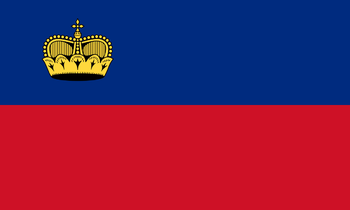

One of the wealthiest heads of state with a personal worth of over £2 billion. Once threatened to leave with the Royal Family and relocate to Austria if a constitutional shake-up was not agreed upon. Arguably one of the most powerful monarchs in Europe, in terms of practical political power; unlike most European monarchs, he actually does have an effect over the government. He is a major shareholder in several of his country's companies, so there's also that. His people love him, and several referenda to reduce the power of the monarchy have been resoundingly defeated. Hans-Adam handed over the duties of day-to-day government decision making to his heir, Hereditary Prince Alois, in 2004 to prepare for the transition to the next generation. Hans-Adam's father, Franz-Joseph II, did the same thing in 1984.
He is a third cousin of Grand Duke Henri of Luxembourg, a third cousin once removed of King Philippe of Belgium, a half-fourth cousin once removed of King Harald V of Norway, a half-fourth cousin twice removed King Carl XVI Gustaf of Sweden, a half-fourth cousin thrice removed to King Frederik X of Denmark, a fifth cousin of King Charles III of the United Kingdom, and a fifth cousin once removed to King Willem-Alexander of the Netherlands, King Felipe VI of Spain, and Prince Albert II of Monaco.
Northern Europe
Frederik X, King of Denmark


King of Demark since the abdication of his mother, Margrethe II of Denmark, on January 14, 2024.
His marriage to the Australian-born Mary Donaldson has been portrayed as a modern fairytale romance. The couple met during 2000 Summer Olympics in Sydney, where they had an odd set of mutual acquaintances, specifically the then Prince of Asturias (now King Felipe VI of Spain) was acquainted with Mary's flatmate. Frederik apparently hid his status as Crown Prince of Denmark until well after they had started dating, and he would make frequent, but discreet trips to Australia to see her. In 2003, their relationship was publicly revealed when Queen Margrethe II announced that she had granted her son permission to marry, and the two were wed on May 14, 2004. They have had four children together, with heir apparent Christian note born in 2005, being followed by Isabella (2007), then twins Vincent and Josephine (2011). His accession resulted in all his younger children getting the Danish version of Knight Fever as Knights of the Elephant, Christian having gotten his knighthood at 18.
He acquired the nickname "Pingo" (Penguin) during his naval service after his wetsuit filled with water and he was forced to waddle like a penguin. A keen sportsman, he has competed multiple marathons, became the first royal to do an Ironman in 2013 and has also taken part in cross-country skiing competitions. Like Britain's Charles III, he is also an environmentalist.
His accession was an unexpected turn, even for himnote . In the past, his mother, like the late Elizabeth II, had insisted that she would remain on the throne until she fell off it. However, a major back surgery in February of 2023, and a series of other health issues over the course of the year made her reconsider this. In her yearly televised New Year's Eve message, Margrethe announced her abdication to the shock of the Danish public. At the time of her abdication, his mother was the only queen regnant in the world, a distinction she had held since the death of Elizabeth II in 2022.
He is a first cousin once removed of King Carl XVI Gustaf of Sweden, a second cousin once removed of King Harald V of Norway, a third cousin of both King Philippe of Belgium and Grand Duke Henri of Luxembourg, a third cousin once removed of King Charles III of the United Kingdom, a half-third cousin once removed of King Willem-Alexander of the Netherlands, a fourth cousin of King Felipe VI of Spain, a half-fourth cousin thrice removed of Prince Hans-Adam II of Liechtenstein, and a half-fifth cousin thrice removed of Prince Albert II of Monaco. He is also the nephew of the last King of Greece, Constantine II, who was married to his aunt Anne-Marie of Denmark.
Harald V, King of Norway

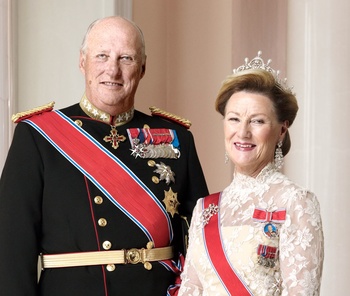
The first Norwegian king in recent times to actually be born in Norway (648 years, if you want to be exact). Technically the sixth king of Norway with the name Harald, but since Harald Bluetooth isn't counted in the numbering system used by Norwegian monarchs, he's known as Harald V. Caused considerable public controversy as crown prince when he married his commoner girlfriend of nine years, Sonja Haraldsen, in 1968.note Today he's Norway's most popular king, beloved for his sense of humor and leadership during trying times. Also refuses to abdicate, saying that he has an agreement with his children that when they think he has gone completely crazy they will let him know it's time to leave.
Norway was the third European monarchy to adopt absolute primogeniture, but it only applies to those born after 1990 (if they had applied it retroactively like Sweden did Harald's eldest sister Princess Ragnhild would have suddenly found herself as heir to the throne). Harald and Sonja's granddaughter Princess Ingrid Alexandra is expected to become Norway's second queen regnant after 14th-century Queen Margaretha, who founded the Kalmar Union.
Like Margrethe of Denmark above, he's been portrayed in his homeland's political dramas — for example, the Norwegian hit series Occupied (Norwegian: Okkupert), which details Russia's gradual occupation of Norway following the nation's green-energy policy. Harald appears when the Prime Minister must attend the Palace to request the formation of a new government. He also shows up in The King's Choice (Norwegian: Kongens nei) and Atlantic Crossing, both of which depict his family's escape from Norway and refuge in Sweden and the United States during the Nazi occupation in World War IInote . It doesn't feature King Harald personally, but in its telling Troll (2022) presents the intriguing concept that the Royal Palace in Oslo contains a Dark Secret in that it was built on top of a far older palace inhabited by an ancient troll king and his family — and said troll is bloody furious about it, rampaging towards Oslo to reclaim his home.
As king of Norway, he is the one who annually presents the Nobel Peace Prize to its recipient.
Fun fact: out of all the monarchs presented here, he’s closest in the line of succession to the throne of the United Kingdom, being the great-grandson of King Edward VII, second cousin of the King, and therefore 86th in linenote .
He is a first cousin once removed to both King Philippe of Belgium and Grand Duke Henri of Luxembourg, a second cousin once removed of King Carl XVI Gustaf of Sweden, King Charles III of the United Kingdom, and King Frederik X of Denmark, a third cousin once removed of King Felipe VI of Spain, a third cousin twice removed of King Willem-Alexander of the Netherlands, a half-fourth cousin once removed of Prince Hans-Adam II of Liechtenstein, and a seventh cousin of Prince Albert II of Monaco.
Carl XVI Gustaf, King of Sweden


A nature lover who, if he had been given a choice, would have been a farmer. Considered something of a harmless, vaguely buffoonish character (and is in fact dyslexic; it was suspected for years after he misspelled his signature on his accession document, before admitting it in 1997), many Swedes are willing to put up with him until his very popular and capable heir, Crown Princess Victoria, takes over (she's also dyslexic). Like his Scandinavian counterparts above, he also has refused to consider abdication. He is the longest reigning monarch in Swedish history.
House Bernadotte is a relatively recent monarchical family, having been created when Sweden's previous ruling house found itself heirless and Frenchman Jean-Baptiste Bernadotte, the son of a lawyer from Pau in France who eventually became Marshall of France, was contacted by a Swedish colonel in Paris and asked if he wanted to become King of Sweden. He did.
He isn't technically the 16th king of Sweden to be named Carl; the Swedish regnal numbering system was based off a mythical line of Swedish kings constructed by Johannes Magnus in the 16th century in an attempt to substantiate the antiquity of the Swedish throne. All kings named Carl/Charles base their number off of Charles VII, who was the first king to adopt this system. If they did not have this system, he would be known as Carl X.
The Swedish monarchy was the first to adopt 'Equal' or 'Absolute Primogeniture' in 1980, meaning that the eldest child inherits the throne regardless of their gender. This meant that then-Crown Prince Carl Philip, at the time 7 months old, was stripped of his status in favour of his older sister, the then three-year-old Victoria.note Crown Princess Victoria was the only direct female heir apparent of a throne in the world for 33 years (1980-2013, when the accession of Willem-Alexander in the Netherlands left his oldest daughter Catharina-Amalia heir apparent to the Dutch throne).
As king of Sweden, he is the one who annually presents the non-Peace Nobel Prizes to their recipients.
He is a first cousin once removed of King Frederik X of Denmark, a second cousin once removed of King Harald V of Norway, a third cousin to both King Philippe of Belgium and Grand Duke Henri of Luxembourg, a third cousin once removed to King Willem-Alexander of the Netherlands, King Felipe VI of Spain, and King Charles III of the United Kingdom, a half-fourth cousin twice removed of Prince Hans-Adam II of Liechtenstein, and a half-fifth cousin twice removed of Prince Albert II of Monaco.
See also Notable Swedish Monarchs for further detail on the Swedish Monarchy.
Southern Europe
Joan Enric Vives Sicília and Emmanuel Macron, Co-Princes of Andorra


A very atypical monarchy. Thanks to Andorra's strange ancient constitution, the country is co-ruled by two monarchs referred to as Princes. Each of the Princes are actually from the foreign nations of France and Spain; one is the Bishop of Urgell in Spain and the other is the President of France (originally the Count of Foix, a title which later became contiguous with the French monarchy and later the presidency). Both Princes have very few powers constitutionally.
Shāh Karim al-Husayni, Aga Khan IV


Rather than reigning over a geographic territory, the Aga Khan is the hereditary Imam of Nizari Ismāʿīlism, a subset a Shia Islam. Aga Khan IV, the 49th Imam, is a businessman — with an estimated net worth of US$ 13.3 billion — and philanthropist as well as a racehorse owner and breeder. Originally from Iran, he was a dashing figure in his youth and even represented the country as a downhill skier in the Winter Olympics.
While he is mostly known as "Aga Khan IV" to the world, Isma'ilis call him "Mawlānā Hazar Imam". His real name is Shāh Karim al-Husayni.
Aga Khan IV had two wives, both of whom he divorced. The first was Sarah Croker Poole, the daughter of a Lieutenant Colonel in British India. She assumed the name "Salimah Aga Khan" upon marriage, and conceived three children (Zahra, Rahim, and Hussain). The second was Gabriele Renate Homey from Germany, who assumed the name "Inaara Aga Khan" upon marriage, and conceived one son (Aly).
Holders of the title claim descent from Muhammad, himself. The line originally didn't have any claim to royalty or nobility, but The British Raj recognized Hasan Ali Shah, the 46th Imam of Nizari Ismāʿīlism, as a prince out of gratitude for his help during the First Anglo-Indian Warnote . Aga Khan IV's own royal status was conferred upon him by both Elizabeth II and the Shah of Iran. Also, although Nizari Ismāʿīli Shias originate from Iran, the current seat of the Imamate is in Portugal, which is why the folder is among Southern European monarchies.

The Monégasque Royal Family have their own page.
Felipe VI, King of Spain

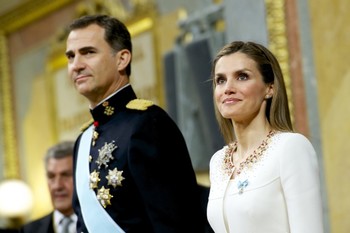
Second King of Spain since the restoration of the monarchy in 1975. Ascended the throne in 2014 after the abdication of his father, Juan Carlos I. His elder daughter Leonor is the world's sole female heir presumptive (meaning that in the unlikely event her parents have a son she would be displaced in the line of succession); the Spanish government considered introducing legislation that allowed for absolute primogeniture, but chose not to do so when it became clear that Felipe and his wife, Queen Letizia, would not have any more children.
He is a second cousin once removed to King Charles III of the United Kingdom, a third cousin once removed to King Carl XVI Gustaf of Sweden, and King Harald V of Norway, a fourth cousin of King Philippe of Belgium, King Frederik X of Denmark, and Grand Duke Henri of Luxembourg, a fifth cousin of King Willem-Alexander of the Netherlands, a fifth cousin once removed of Prince Hans-Adam II of Liechtenstein, and a sixth cousin of Prince Albert II of Monaco. Through his mother Queen Sofia, he is also the nephew of the last King of Greece, Constantine II.
See also The Kingdom of Spain for further detail on the Spanish Monarchy.
Francis, Pope of the Vatican City


Elected monarch of the Vatican City and, by extention, of the Catholic Church. Though technically it's the other way around: the Pope is the monarch of Vatican City ex oficio, that is he holds the position as monarch because he is the man in charge of the Catholic Church. But, since Pope and the monarch of the Vatican City are the same person, it doesn't make any difference.
While the papacy is not a typical monarchy, the Pope is nonetheless a major player in world politics and a spiritual leader for the over 1 billion Roman Catholics worldwide. Pope Francis is the 266th Pope and the first from the Americas. See The Pope.
Western Europe
Phillipe, King of Belgium


The proper title is King of the Belgians, making him the only popular monarch left in the world — not in terms of beloved status in this use of the word (although he is) but rather a 'popular monarch' is a term used for royal titles referring to a people rather than a territory.
Philippe took over after his father Albert II abdicated in July 2013 (making him the fourth monarch to do so that year after those of the Netherlands, Vatican City and Qatar). There's a lack of clarity about the name of the royal house, since they changed it in World War I for more or less the same reasons as their British cousins the Windsors, but they haven't objected terribly about using the old name since then. His wife is the first Queen of the Belgians to actually be born in Belgium, and their oldest child and heir, Princess Elisabeth, is expected to become Belgium's first queen regnant.
The Belgian royal family is a part of the House of Saxe-Coburg and Gotha but dropped the use of the name in the First World War for the same reason as The British Royal Family: to avoid association with Germany and the Kaiser. Instead of renaming the dynasty, the Belgian royals started using "of Belgium"note in their titles. The use of "Saxe-Coburg and Gotha" slowly began being reintroduced in the 21st century as King Philliipe wishes to trim down the monarchy and reserve "of Belgium" to those within his immediate family.
The current King is also a first cousin of Grand Duke Henri of Luxembourg, a first cousin once removed of King Harald V of Norway,, a third cousin of both King Carl XVI Gustaf of Sweden and King Frederik X of Denmark, a third cousin once removed to both King Charles III of the United Kingdom and Prince Hans-Adam II of Liechtenstein, a fourth cousin of King Felipe VI of Spain, a fourth cousin once removed of King Willem-Alexander of the Netherlands, and a fifth cousin of Prince Albert II of Monaco. Through his mother Queen Paola, he is also a descendent of the Marquis de La Fayette.
Henri, Grand Duke of Luxembourg


Sovereign of the world’s sole remaining grand duchy. Being a constitutional monarch, he has very little power, but he does have a (rarely-used) veto power that he tried to use to stop a euthanasia/assisted suicide bill passed in 2008. Also known for giving a press conference where he denounced his own mother over her horrific treatment of his wife. Yeah.
He is a first cousin of King Philippe of Belgium, a first cousin once removed of King Harald V of Norway, a third cousin of King Carl XVI Gustaf of Sweden, King Frederik X of Denmark, and Prince Hans-Adam II of Liechtenstein, a third cousin once removed of King Charles III of the United Kingdom, a fourth cousin of King Felipe VI of Spain, a fourth cousin once removed of King Willem-Alexander of the Netherlands, and a fifth cousin of Prince Albert II of Monaco.
Willem-Alexander, King of The Netherlands


Ascended the throne upon the abdication of his mother on April 30, 2013. The first reigning King of the Netherlands since 1890, his predecessors (Queens Wilhelmina, Juliana and Beatrix) all having been queens regnant. A sports fan and water conservationist. He also works undercover as an airline pilot, flying short-haul flights once or twice a month as a way to clear his mind.
Should be known as William/Willem IV, but chose to instead use Willem-Alexander as his regnal name, citing that "Willem Four is next to Bertha Two in the meadow."note . It is also believed that, having been nicknamed Prince Pils because of an alleged fondness for lager, he wished to avoid being called Willem IV (Willem Vier in Dutch) for fear of being nicknamed "Willem Bier" (William Beer).
He is a third cousin once removed of King Carl XVI Gustaf of Sweden, a half-third cousin once removed of King Frederik X of Denmark, a third cousin twice removed of King Harald V of Norway, a fourth cousin once removed of both King Philippe of Belgium and Grand Duke Henri of Luxembourg, a fifth cousin of both King Felipe VI of Spain and King Charles III of the United Kingdom, a fifth cousin once removed of Prince Hans-Adam II of Liechtenstein, and a seventh cousin of Prince Albert II of Monaco.

Oceania
Tupou VI, King of Tonga
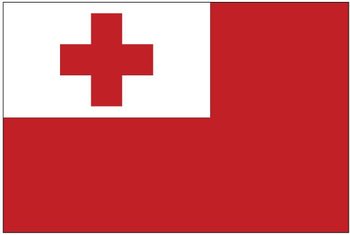
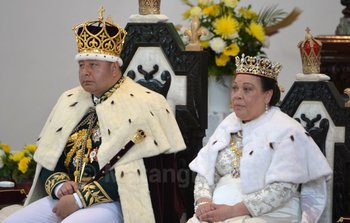
King of Tonga, an island chain in Polynesia. Recently ascended the throne on the death of his elder brother, George Tupou V. Tonga was part of the British Commonwealth, but it always recognized the King of Tonga as the actual monarch, as opposed to Elizabeth II. The Tongan people have great confidence in their monarchy (instead of the usual bickering) and it has been in the hands of the same family since the establishment of the Kingdom.
His great aunt, Queen Sālote Tupou III (standing a full 6' 3"), sealed her beloved status amongst Tongans and the rest of the Commonwealth when she she attended the 1953 coronation of Queen Elizabeth II in London. During the coronation procession, it began to rain heavily and hoods were placed on the carriages in the procession. As Tongan custom dictates that one should not imitate the actions of persons one is honouring, she refused a hood and rode through the pouring rain in an open carriage waving cheerily to the huge crowds.
Historical & abolished monarchies
Note — this list includes the historical monarchs of nations which are now republics, or no longer exist. The current claimants to each throne are also listed, though their titles may be unrecognised nationally and internationally. The flags used here are the flags that were used at the time of the monarchs' reigns, not the current ones, which may be vastly different.Africa
Farouk, King of Egypt
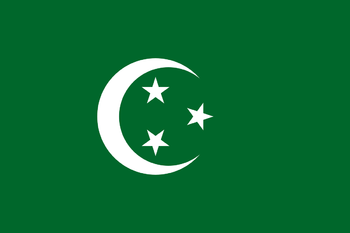
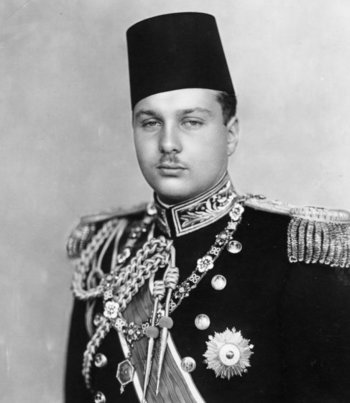
Penultimate King of Egypt. A famous womanizer, glutton, and narcissist, he was deposed in 1952; he fled to Italy and then France. His penchant for luxury despite the fact that most Egyptians lived in poverty led to "King Farouk" being a mid-20th century byword for "person who lives in great luxury amidst great deprivation." His most lasting legacy is the "Louis-Farouk" style of furniture, a variant of Louis XV-style design featuring ostentatious gilding and ornate fabrics that remains very popular in Egypt.
His son, Fuad, formally reigned as the last King of Egypt and the Sudan from July 1952 to June 1953, when he was deposed and banished. He lost his Egyptian citizenship between 1958 and 1974, when President Anwar Sadat decided to restore it. He now lives in Switzerland, though he has visited Egypt from time to time.
Haile Selassie I, Emperor of Ethiopia

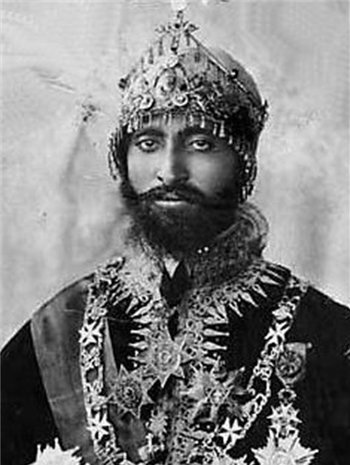
Last Emperor of Ethiopia. Yes, the house name refers to that Solomon; tradition holds that the royal family of Ethiopia were descended from King Solomon and the Queen of Sheba. Haile Selassie is known for being a good ruler, reigning for 44 years until a Communist military coup overthrew him, and also for being revered as Messianic Archetype and God incarnate by the Rastafarians. While Haile never embraced this worship, he never tried to make them stop either; his feeling was that he knew he wasn't God, but if somebody else thought he was it was harmless.
Zera Yacob Amha Selassie is his grandson and has been head of the Imperial House of Ethiopia since 17 February 1997.
Idris, King of Libya


The first and last King of Libya. Idris came from the Senussi tariqah, a Sufi order originating from the deserts of Cyrenaica that was established by his grandfather, Muhammad ibn Ali al-Sanusi. The Senussi were political opponents of the Italian occupation of Libya, and Idris, who led the order after the abdication of his cousin, went into exile in Egypt in 1922 to avoid conflict with Italy. He returned in 1951 to become the king of the newly-independent Libya, as part of an agreement among the Allies to curtail Soviet influence in the southern Mediterranean. Idris, who spent three decades in exile, never really wanted to rule as king, although he certainly tried; he introduced unitary rule, and improved the economic and living conditions of the formerly very poor Libya, particularly after oil was discovered in the 1960s. Libya was a Western ally during Idris' reign, and hosted the biggest foreign U.S. military airbase at the time. Naturally, this attracted criticism from Arabs who opposed Western designs in the region. This culminated in 1969, when the military, under Colonel Muammar Gaddafi, staged a coup while Idris was abroad in Turkey, announcing Libya's transition to a republic with Gaddafi as president. Idris was sentenced to death in absentia, so the former king spent his remaining years in exile once more, dying in Egypt.
Idris had six children, none of whom left descendants. The principal claimant to the Senussi order is Mohammed El Senussi, a great nephew of Idris. Another claimant is Idris bin Abdullah al-Senussi, a great-grandson of a brother of King Idris' father.
Muhammad VIII al-Amin, King of Tunisia


The first and last King of Tunisia. The Husaynids were a noble family of paternal Turkish origin who presided over the Beylik of Tunisia, a province of the Ottoman Empire, since the early 18th century. When the French conquered the Beylik in 1881, they left the Husaynids in place to govern the region on their behalf. Muhammad VIII, known popularly as "Lamine Bey", succeeded his predecessor and second cousin, Muhammad VII al-Munsif "Moncef Bey", in 1943, after the latter was accused of collaborating with the Nazi-affiliated Vichy regime, and was subsequently arrested by the Allies and exiled to France. For this reason, Lamine Bey was not well-received by the populace, who regarded him as an usurper. His attempts to gain political influence floundered in the run-up to Tunisian independence. He became king when the nation achieved independence, but a year afterward was deposed by the Neo Destourians under Habib Bourguiba, who proclaimed a republic. His wealth and property were confiscated, while some members of the royal family were imprisoned. Lamine Bey himself lived in house arrest until his death in 1962.
The current head of the Husaynids is Muhammad XI al-Habib, a nephew of Lamine Bey.
Americas
Pedro II, Emperor of Brazil
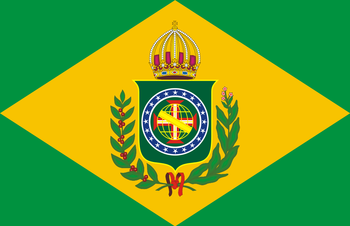

Second and last Emperor of Brazil. Highly loved and respected, not only by his own people, but also internationally, as a humble and hard-working man completely dedicated to the growth of his country (including the abolition of slavery, a controversial move at the time in Brazil). Under that public façade, however, there was a very sad man who never wanted the crown and resented the fact that he couldn’t have a simple life. He was deposed by a handful of hardline military leaders with no popular support; Pedro was so tired of the crown that refused to offer resistance, much to the disappointment of his people, and went to exile on his own volition. This got to the point where even the leaders of the coup which deposed him saw him as a role model.
The current claim to the throne is disputed; Prince Bertrand of Orleans-Braganza is the head of the Vassouras branch of the House of Orléans-Braganza. The Vassouras branch claims the throne in opposition to the Petrópolis branch of the Orléans-Braganzas, headed by Prince Pedro Carlos of Orléans-Braganza. Though both Prince Bertrand and Prince Pedro Carlos are great-great-grandchildren of Emperor Pedro II, they dispute leadership over the Brazilian Imperial Family due to a dynastic dispute concerning their fathers, who were cousins.
Maximilian I, Emperor of Mexico


Second and last Emperor of Mexico. He was one of the younger brothers of Franz Joseph I, the second-to-last Austro-Hungarian Emperor. Originally serving as the commander-in-chief of the Austro-Hungarian Navy, he was approached by Mexican conservatives while he was visiting Napoleon III in Paris in 1856. The conservatives were waging a war against Mexican liberals over the 1857 Constitution, and they wanted a European monarch to "retake" Mexico and legitimize their crusade. As Maximilian was a descendant of Carlos I (better known elsewhere as Charles V, Holy Roman Emperor), who was King when Spain colonized Mexico, this made him a good match, not knowing that Maximilian was a committed liberal and sympathized with their opponents more. In 1861, France invaded Mexico to help the conservatives during the war. This pissed off the United States, as it saw Mexico (and the rest of the Americas) as its backyard, but since the American Civil War occurred at the same time, it couldn't stop France from installing Maximilian as Emperor. After the Civil War ended, however, the French saw the American specter in the horizon and decided to bail out of the continent. The conservatives quickly lost the war, and Maximilian was captured by the liberals in Querétaro in May 1867. President Benito Juárez, while sympathetic to Maximilian for his liberal views, still approved for Maximilian's execution a month later, because he wanted to make it clear to Europeans that Mexico would never be ruled by them again.
Maximilian's wife was Charlotte of Belgium, a second cousin (they were both great-grandchildren of Ferdinand I of the Two Sicilies). Charlotte was also a first cousin of Queen Victoria, and spent her childhood holidays in Windsor. She shared a mutual hostility with her sister-in-law, Elisabeth of Austria (wife of Franz Joseph I), and enjoyed her husband's overseas posting because it allowed her to avoid her presence. Maximilian made her rule Mexico whenever he was on foreign trips, technically making Charlotte the first female head of state in the Americas. Charlotte was also known for suffering from a mental illness that got worse as European support for the Mexican conservatives dwindled. She was in Europe when her husband was captured and executed, and was returned back to her native Belgium as her mental state deteriorated. She died in 1927, long outliving her husband.
It should be noted that, while Mexico had two emperors, they were unrelated and ruled at different periods. Before Maximilian, Mexico had installed Agustín de Iturbide as Emperor in 1821, following their Independence War from Spain. Iturbide only ruled for a year before he was deposed by republicans and banished. He made a homecoming a year later... after which he was promptly arrested and executed. Mexico do not like emperors, to say the least.
The current pretender to the Mexican throne is Maximilian von Götzen-Iturbide, Agustín de Iturbide's great-great-great-grandson and a Hungarian-born businessman currently living in Mexico. His claim is backed up by the Habsburg side, as his great-grandfather and Agustín's grandson, Salvador de Iturbide y Marzán, was adopted by Maximilian I.
Asia
Mohammad Zahir Shah, King of Afghanistan


The last and longest-serving King of Afghanistan. He succeeded the throne following the assassination of his father, Mohammad Nadir Shah. His reign brought peace to the country, then having experienced several regime changes in a few years, and although most of the population remained poor, historians agreed that he did the best he could to modernize the conservative nation. He opposed the creation of Pakistan, sending up troops in a futile attempt to claim the Pashtun territories of Pakistan that had been ceded by Afghanistan to The Raj in 1893. This would come back to bite Afghanistan in the ass later, as Pakistan became a constant thorn to Afghanistan's road to peace during its civil war. Zahir Shah was deposed by his communist-leaning cousin Daoud Khan in 1973, who would in turn be assassinated in the 1978 Saur Revolution, triggering a prolonged civil war that continues to this day. Zahir Shah was in Italy at the time, and chose to abdicate the throne, living out the following 29 years in a modest apartment near Rome. There were proposals to restore him as king after the collapse of the Democratic Republic of Afghanistan in 1992, then again in 2002, following the removal of the Taliban, but both of these were opposed by Pakistan, which in the latter case lobbied the United States to install American-educated statesman Hamid Karzai as president. Zahir Shah was given the ceremonial role of "Father of the Nation" (Baba-i-Milat-i-Afghanistan), which died with him in 2007.
The current pretender to the Afghan throne is Zahir Shah's second son, Ahmad Shah Khan, a poet who currently resides in the United States.
Puyi, Emperor of China
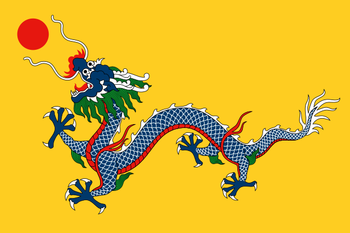
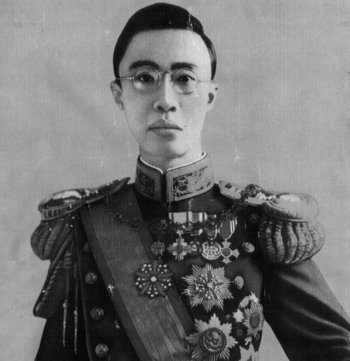
Last Emperor of Imperial China. Puyi succeeded to the Manchu throne at the age of three, when his uncle, the Guangxu emperor, died in 1908. He reigned under a regency for three years, and then in February 1912, in response to the Chinese Revolution, he was forced to abdicate, ending the 267-year Qing rule of China and the 2,000-year-old imperial system. He was permitted to continue living in the palace in Beijing. Puyi chose 'Henry' as a given name and was thereafter known as Henry Puyi in the West. In 1924 he secretly left Beijing to reside in the Japanese concession (colony) at Tianjin. In 1932, he was installed as president, and from 1934 to 1945 he was emperor of the Japanese puppet state of Manchukuo in Manchuria (China’s Northeast) under the reign title of Kangde.
At the end of World War II he was taken prisoner by the Russians and returned to China in 1950 for trial as a war criminal. He was pardoned in 1959 and went again to live in Beijing, where he first worked in the mechanical repair shop of a botanical garden and later became a researcher in the institute of literature and history under the Chinese People’s Political Consultative Conference. His autobiography, From Emperor to Citizen, was published in English in 1964, and he was the subject of the 1987 biopic The Last Emperor.
Jin Yuzhang (Puyi's nephew) is the current heir to the Qing Dynasty, though he himself does not care for the claim nor acknowledge it.
Mohammad Reza Pahlavi, Shah of Iran


The last Shah of Iran. He succeeded his father, Reza Shah, who deposed the Qajars in 1921 and installed a brand new dynasty that was the first in quite a long time not to be of foreign origin (the Qajars, as well as the Afsharids and Safavids before them, were of Turkic descent) and instead claimed descent from the ancient Iranian empires of the age old (the name "Pahlavi", picked by Reza Shah after the Qajars were deposed, came from the pre-Islamic Iranian state of Parthia).
As a young man, he was described as shy and timid, contrasting with his father's imposing stature as a former member of the Iranian Cossack Brigade, but this changed when Reza Shah was forced to abdicate during the Anglo-Soviet invasion of Iran, and Mohammad Reza subsequently took over. His political clout increased further after the 1953 Western-backed coup that deposed the strongly nationalist Prime Minister Mohammad Mosaddegh. The Shah instituted a series of economic, political, and social reforms aiming to bring his country up to the modern world, but was also accused of being nothing more than a Western tool in the Middle East, as well as his frivolous spending, most infamously his insistence to host a lavish party in Persepolis celebrating the 2,500-year long Iranian State while the native Iranians nearby were living in ramshackle houses. Near the end of his reign, his government increasingly turned autocratic, a cult of personality centered on the royal family having been created. This would spark off protests that grew into the 1979 Iranian Revolution, forcing the Shah to flee the country and ending Iran's thousands of years-long monarchy. He had been an enemy of Ayatollah Ruhollah Khomeini, a fundamentalist Shia Muslim cleric, ever since he ordered the military to crush a rebellion instigated by Khomeini in the holy city of Qom in 1963, protesting the Shah's decision to give women the right to vote, and after the Revolution toppled the Shah, Khomeini returned, trumped over the rest of the non-religious revolutionaries, and transformed Iran into a theocratic Islamic state. Meanwhile, Mohammad Reza, who was diagnosed with leukemia in 1974, fled from place to place and eventually spent the last months of his life in Egypt, where he died in 1980. He was buried in Al-Rifa'i Mosque, where his father, Reza Shah, was also entombed.
Mohammad Reza was a notorious womanizer, and yet was also rumored to be bisexual, largely on account of his very close relationship with Ernest Perron, an openly-gay Swiss man he met while studying abroad, and whom he brought back to Iran to serve as a courtier.note The Shah married a total of three women. His first wife, Egyptian princess Fawzia, was betrothed to him to seal the Egyptian-Iranian-Turkish alliance during the interwar period. The marriage was fraught, as the princess reportedly never got used to Iran, and clashed repeatedly with Mohammad Reza's overbearing mother, Tadj ol-Molouk; it was eventually dissolved in 1948. His second wife, German-Iranian socialite Soraya Esfandiary-Bakhtiari, was a love match that ended when the queen was declared infertile, although the couple remained in touch with each other until his death. His third and last wife, Farah Diba, is still alive today, and is the mother of the Shah's firstborn son and current pretender to the Iranian throne, Reza Pahlavi, who currently resides in the United States.
Faisal II, King of Iraq


The last King of Iraq. His family were the Iraqi branch of the Hashemites, the same Arab dynasty that currently rules Jordan; Faisal was a second cousin once removed of Jordan's current king, Abdullah II. His father, Ghazi, died in a car accident at the age of 27, and Faisal was subsequently crowned king at the age of 4. Iraq was therefore governed under a regency led by Faisal's uncle 'Abd Al-Ilah until Faisal reached the age of majority in 1953, although 'Abd Al-Ilah remained as an influential Crown Prince. He did not get to enjoy being in power for very long, however, as Iraq experienced a bloody revolution five years later, killing off Faisal, 'Abd Al-Ilah (whose body was stripped naked, dragged to the streets, and torn apart by the mob), and a few other members of the royal family.
The kingship of Iraq is currently claimed by Ra'ad bin Zeid, Ghazi's cousin, whose immediate family survived the revolution by being in London at the time.
Sunjong, Emperor of Korea


The second and last Emperor of Koreanote . He ascended to the throne when his father, Gojong, was forced to abdicate by the Japanese Empire and spent his short time on the throne as a puppet before being forced to abdicate himself when Korea was annexed in 1910. He spent the rest of his life imprisoned in one of Seoul's palaces and humiliated when the Japanese government "demoted" him from Emperor to King.
The current claimant as head of the House of Yi — as recognized by the family association that maintains its genealogy — is Yi Won, a South Korean businessman. However, there is a faction within the family that contests this claim, with Yi Won's uncle, Yi Seok, declaring himself to be the rightful heir. Yi Seok has named his own heir, Andrew Lee, an Korean-American entrepreneur and supposed distant relative. However, the actual familial relationship between Lee and Yi is being disputednote .
Sisavang Vatthana, King of Laos


The last King of Laos. He came from an ancient lineage that could trace their descent back to Fa Ngum, the first King of Laos, who reigned in the 14th century. He inherited the throne as Laos descended into civil war in the years after its independence from France, when three princes (and the King's distant relatives) vied for the office of prime minister: the Western-supported Boun Oum, the North Vietnamese-supported Souphanouvong, and the neutral Souvanna Phouma. The king chose to support Souvanna Phouma. In 1975, Souphanouvong led the Pathet Lao to invade the royal capital of Luang Prabang, abolishing the monarchy and turning the country into a communist republic. The king, his wife, and several other members of the royal family were moved to reeducation camps in northeastern Laos. The Laotian government officially announced that they had died of malaria in 1978, but it is more likely that they actually died of forced labor and starvation.
The current heir of the dynasty is Sisavang's grandson Soulivong Savang. He was 12 when the royal family was deposed in 1975. While his father, Vong Savang, was among the royals captured and sent to camps, Soulivong managed to escape to France, where he currently lives today.
Gyanendra Bir Bikram Shah Dev, King of Nepal

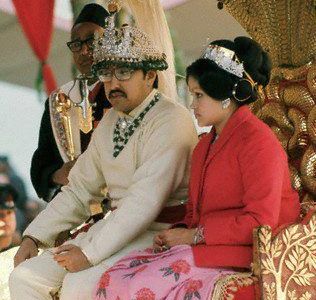
The world’s most recently disbanded monarchy — under the most tragic of circumstances. He reigned as the last King of Nepal and is also known as the world's last Hindu king.
Facing domestic unrest, including a Maoist insurgency, the Nepalese royal family never suspected that the greatest threat to the monarchy lived within the palace walls. On June 1, 2001, Crown Prince Dipendra of Nepal got drunk and high (as he often did). Stumbling into the royal dining hall, the prince gunned down King Birendra, Queen Aishwarya, and eight other members of the royal entourage, including his younger siblings. The prince allegedly then turned the gun on himself in an attempt to commit suicide. He failed to end his own life and plunged into a coma. As heir to the throne, the murderous Crown Prince Dipendra was declared King of Nepal. He reigned for three days in the hospital before being declared brain dead. His uncle Gyanendra, detailed in this entry, was then crowned king.
The monarchy was subsequently disbanded at the beginning of 2008. The former king is still relatively popular among Nepali people, with many hoping the monarchy might be restored in the future.
Ahmad bin Yahya, King of North Yemen


The penultimate King of the Mutawakkilite Kingdom of Yemen, better known as North Yemen. Notorious for his temper and volatile policies, he opposed modernists who sought to reform the country, and thus became an enemy of pan-Arab leftists. Like his father, he ruled Yemen as an isolationist dictatorship, as he distrusted any kind of foreign influences, although he did sign a defense pact with Egypt, Saudi Arabia, and Syria in 1955, seeking to counter the Baghdad Pact between Iraq, Pakistan, Turkey, and the United Kingdom. Upon his death in 1962, his son Muhammad al-Badr succeeded him, but several weeks later, revolutionaries toppled the royal family and installed a republican government.
The Qassims are the latest dynasty of religiously consecrated monarchs who acted as both temporal and religious leaders of Yemeni Zaydis. Through various branches, Zaydi imam-kings, collectively known as the Rassids (from the founder's name al-Qasim al-Rassi), had ruled Yemen since the late 9th century. The deposed royal family are descended from al-Mansur al-Qasim, who lived in the 16th century. The current head of the family is Muhammad al-Badr's eldest son, Ageel.
Mehmed VI, Sultan of the Ottoman Empire


The 36th and last Sultan of the Ottoman Empire. Born to Abdulmejid I and his Abkhazian consort Gülistu Kadın, he succeeded his half-brother Mehmed V during the crucial final months of World War I, which saw the Ottomans losing nearly all of its European and most of its Asian territories, reduced to only controlling the Anatolian Peninsula and Eastern Thrace. The Treaty of Sèvres, as proposed by the Entente, would have further reduced the former superpower by partitioning Anatolia among the Entente, Greece, and Armenia. While the Sultan gave his approval for the terms, this was opposed by Turkish nationalists, including Mustafa Kemal (Atatürk), who felt that it humiliated the Turkish State. The nationalists denounced the Sultan's government and, through the newly formed parliament, abolished the Sultanate on 1 November 1922. Mehmed VI was exiled from Turkey and moved to Europe, living out his final years in the Italian Riviera. Despite his deposition, the institution of the Ottoman Caliph would continue for a few years under his cousin Abdulmejid II, before it was finally dissolved in 1926.
Following their downfall, the Ottomans became ordinary Turkish citizens and mostly adopted the surname "Osmanoğlu". The current head of the Ottoman dynasty is Harun Osman Osmanoğlu, a great-grandson of Mehmed VI's half-brother Abdul Hamid II.
Bảo Đại, Emperor of Vietnam


The last Emperor of Vietnam. Technically, he only reigned over Annam, a region in Central Vietnam surrounding the city of Huế, as Vietnam had been annexed and partitioned into three territories (Tonkin, Annam, and Cochinchina) by France since the 19th century, with France electing to retain the native dynasty to nominally rule over Annam. The only time when he actually "ruled" over all of Vietnam was during a very brief period in 1945, when Japan (which had conquered the country in 1940) pressured Bảo Đại to declare Vietnam independent from France. After Japan surrendered, Hồ Chí Minh convinced the emperor to abdicate and turn the country into a republic, which he gladly did. However, France returned shortly after, and set about to reestablish its presence in the country, triggering a seven year-long war against the communist Việt Minh. France installed Bảo Đại to become Chief Minister of Vietnam in 1949, a position that was effectively ceremonial as the former emperor preferred to stay well away from conflict. Eventually, France bowed out in 1954, dividing the country in two. Bảo Đại remained as the Chief Minister of South Vietnam until Prime Minister Ngô Đình Diệm decided to kick the emperor out through rigged elections in 1955. Bảo Đại spent the remaining years of his life in France.
After his death, Bảo Đại's two sons Bảo Long and Bảo Thăng succeeded as head of the exiled imperial family, but they both died without issue. The family is currently led by a distant relative, Guy Georges Vĩnh San, who is descended from Emperor Thiệu Trị (Bảo Đại's great-great-grandfather).
Europe
Zog I, King of Albania


The first and last King of Albania. Born to an Albanian beylik family who had been living in the Mat region since the 13th century, he inherited the position of Governor of Mat from his father in 1911, and was present during the Albanian Declaration of Independence from the Ottoman Empire in Vlorë in 1912. He was briefly detained by the Entente during World War I for siding with the Austro-Hungarians, but was eventually released, and returned to his homeland in 1919. He was elected President in 1925, and took sweeping powers, to the point that Albania was effectively a dictatorship during the interwar period. In 1928, his status was upgraded to that of King. He styled himself as "King Zog", as it was feared that taking his Arabic first name might make him unpalatable to other European countries. Despite multiple attempts, Zog was unable to shake off his country's dependence on Italy, which, after all, was the reason why the country managed to achieve independence at all (Greece and Serbia had wanted to partition the territory among themselves following World War I, only to be vetoed by Italy). Eventually, Italy under Benito Mussolini invaded the country in 1939, and Zog was exiled. In the aftermath of World War II, the communists took over Albania, and forbade Zog and the rest of the royal family from ever setting foot on Albania again. The rule was repealed after the Hole in Flag, though Zog by this point had long since died.
The current pretender to the Albanian throne is Zog's grandson, Prince Leka. He was born in South Africa, but currently lives in Albania. He has worked in various posts in Albania's government, and was even considered to run for president in 2022.
Franz Joseph I, Emperor of Austria-Hungary


AKA The other Kaiser, he was among Europe's longest reigning monarchs, outliving his contemporary, Queen Victoria. Also known for having endured a horrific stream of personal (and ultimately nationwide) disasters with nigh impregnable stride. At the time of his death, Franz Joseph had outlived his only son (who infamously made a suicide pact with his lover), two of his three brothers (the surviving one was openly gay and had no interest in politics), and all of his nephews (one of whom was Franz Ferdinand, whose assassination led to said nationwide disaster). The throne ended up passing to a great nephew, Karl I (or Karl IV in Hungary), who made attempts at brokering peace while trying to keep his crumbling empire together, and also made two failed efforts at restoring the throne in Hungary in the 1920s. He would ultimately become the last Austro-Hungarian monarch and die exiled in Madeira, although his son/heir Otto (noted for holding a seat in the European Parliament from Germany and being an advocate for European integration) would live on until 2011.
The current head of the House of Habsburg-Lorraine is Karl's grandson Karl von Habsburg, son of Otto, is a businessman and philanthropist active in international organizations living in Salzburg.
Simeon II, Tsar of Bulgaria
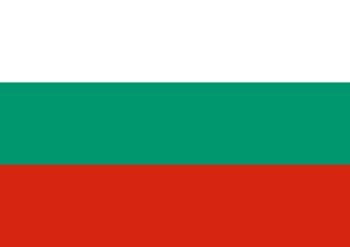

The last king (Tsar) of Bulgaria, who was deposed by the communist revolution as a pre-teen in 1948 and exiled. After the fall of European communism, he returned to Bulgaria under the name Simeon Sakskoburggotski (Saxe-Coburg-Gotha), and served as the elected Prime Minister from 2001 to 2005.
He is a half-second cousin to Grand Duke Henri of Luxembourg, a third cousin once removed to King Felipe VI of Spain, a third cousin twice removed to King Philippe of Belgium, a fourth cousin once removed to King Carl XVI Gustaf of Sweden, King Harald V of Norway, and Prince Hans-Adam II of Liechtenstein, a fourth cousin twice removed to King Charles III of the United Kingdom, and King Frederik X of Denmark, a fifth cousin once removed to King Willem-Alexander of the Netherlands, and sixth cousin to Prince Albert II of Monaco.
Louis XVI, King of France

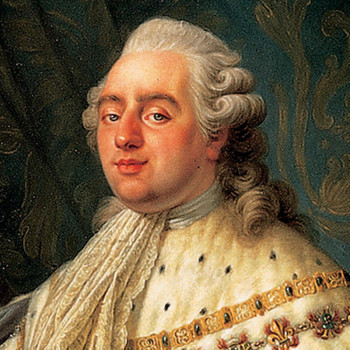
Married to Marie-Antoinette, sister of Joseph II of Austria-Hungary. He provided important aid to the American colonists during The American Revolution, sending money, supplies and troops to support the rebels, although this hastened France's eventual bankruptcy and he was unable to fix the failing finances left by his grandfather Louis XV. Unrest erupted throughout the country, resulting in The French Revolution. He was eventually executed by guillotine by French republicans for his alleged crimes.
There are three claimants to the defunct French throne; Louis Alphonse de Bourbon's claim is based on his descent from Louis XIV of France through his grandson Philip V of Spain. Jean Carl Pierre Marie d'Orléans is the senior male descendant by primogeniture in the male-line of Louis-Philippe I, King of the French (most royalists in France back his claim). Finally, Jean-Christophe, Prince Napoléon, is in the view of some Bonapartists, head of the former Imperial House of France.
See Letat Cest Moi for other French monarchs both before and after him.
Wilhelm II, Kaiser of Germany

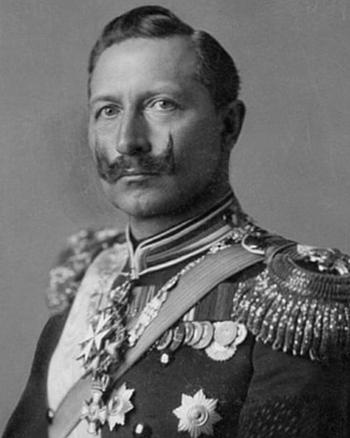
His role in the First World War naturally made him a hate figure among the Allies. He had a withered left arm and wasn't a Nazi. Seriously. Every time people make that mistake, one of us history nerds gets boils from the raw stupid. Also, he had an awesome hat. Also, he was the oldest grandchild of Queen Victoria.
His full title was (brace yourself): His Imperial and Royal Majesty William the Second, by the Grace of God, German Emperor and King of Prussia, Margrave of Brandenburg, Burgrave of Nuremberg, Count of Hohenzollern, Duke of Silesia and of the County of Glatz, Grand Duke of the Lower Rhine and of Posen, Duke in Saxony, of Angria, of Westphalia, of Pomerania and of Lunenburg, Duke of Schleswig, of Holstein and of Crossen, Duke of Magdeburg, of Bremen, of Guelderland and of Jülich, Cleves and Berg, Duke of the Wends and the Kashubians, of Lauenburg and of Mecklenburg, Landgrave of Hesse and in Thuringia, Margrave of Upper and Lower Lusatia, Prince of Orange, of Rugen, of East Friesland, of Paderborn and of Pyrmont, Prince of Halberstadt, of Münster, of Minden, of Osnabrück, of Hildesheim, of Verden, of Kammin, of Fulda, of Nassau and of Moers, Princely Count of Henneberg, Count of the Mark, of Ravensberg, of Hohenstein, of Tecklenburg and of Lingen, Count of Mansfeld, of Sigmaringen and of Veringen, Lord of Frankfurt.
- Let's be thankful for this one. There are at least three places he was ruler of which are not mentioned there, and there were probably more, so it could have been even worse. Still can't help but wonder if he remembered it himself.
The current head of the House of Hohenzollern is his great-great-grandson Georg Friedrich, Prince of Prussia, a businessman and consultant from Bremen.
For more information on Wilhelm II, and the German Kaisers that preceded him, and the Kings of Prussia that preceded them, see Prussian Kings.
Constantine II, King of Greece

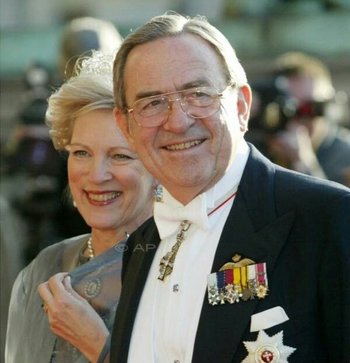
The last king of one of Europe's most recently-disbanded monarchies. After spending World War II in exile in South Africa, Constantine returned to Greece in 1946, succeeding to the throne upon his father’s death in 1964. Fearing leftist infiltration of the army, he dismissed Premier Georgios Papandreou and appointed interim premiers until April 21, 1967, when a military coup forestalled the election he was planning for May of that year. He attempted a countercoup from northern Greece but had few sympathizers and almost immediately fled to Rome with his family. The military regime retained control of the monarchy and appointed a regent in Constantine’s place, granting the king a free return if he so desired.
In 1973, the military regime ruling Greece proclaimed a republic and abolished the Greek monarchy. After the election of a civilian government in November 1974, another referendum on the monarchy was conducted; the monarchy was rejected, and Constantine, who had protested the vote of 1973, accepted the result.
Important point: modern Greece was a kingdom for more than half its history but neither ruling dynasty was Greek in origin: King Otto was from the House of Wittelsbach, while Kings George I, Constantine I, Alexander, George II, Paul and Constantine II were from the House of Glücksburg. When Greeks speak of a “royal family”, that’s the only one they can refer to.
None of the two dynasties ever claimed descent from any Byzantine, let alone ancient Greek, house, and no Greek/Hellenistic royal houses existed after the Roman conquest — succession to the Byzantine throne was never officially hereditary.
Finally, all Greek constitutions since the revolution of 1821 explicitly forbid the award or acceptance of titles of nobility on Greeks. Officially there were not even a crown prince or princes and princesses; the king’s children were simply called βασιλόπαιδες, basilopaides ‘king’s children’, and the crown prince was called διάδοχος, diadokhos ‘heir’.
The Greek royal family remain very close to other European monarchies, particularly the Danish monarchy from whom they descend, and the British monarchy, due to Prince Philip's Greek ancestry (the family live in London). Queen Elizabeth herself, in a highly unusual turn of events, attended the London wedding of Constantine's son, Prince Pavlos, in 1995. The Queen did not usually attend such events, preferring to send a representative (e.g Prince Edward, Earl of Wessex and Sophie, Countess of Wessex) — in theory so she didn't upstage the couple (though possibly also because she must always have maintained precedence).
Constantine was the maternal uncle of King Felipe VI of Spain and the third cousin once removed and uncle of King Frederik X of Denmark. He was also second cousin to King Charles III of the United Kingdom, third cousin to both King Carl XVI Gustaf of Sweden and King Harald V of Norway, third cousin once removed to both King Philippe of Belgium and Grand Duke Henri of Luxembourg, a fourth cousin once removed of King Willem-Alexander of the Netherlands, a fifth cousin of Prince Hans-Adam II of Liechtenstein, and a sixth cousin of Prince Albert II of Monaco.
Joseph II, Holy Roman Emperor

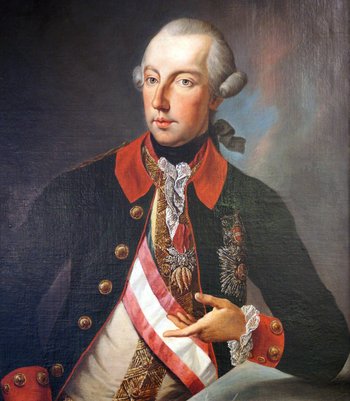
Son of Maria Theresa of Austria and brother to Marie-Antoinette and one of the last monarchs of the Holy Roman Empire before it was dissolved in 1806 after Napoleon's rise in Europe. Famously commissioned operas and works from Mozart and appeared as a character in Amadeus. Well-known for being rather liberal in his day, and attempted to enlighten Austria with significant domestic reforms and also reduced censorship significantly. He died without any male children and was succeeded by his brother, Leopold II.
The crown of the Holy Roman Empire was de facto ceded to the Habsburg family, who continued as the Emperors of Austria after the dissolution of the Empire in 1806. The most obvious heir of the HRE would be Karl von Habsburg, who could be Charles VIII.
Victor Emmanuel III, King of Italy


The penultimate King of Italy. Known in Italian as Vittorio Emanuele III. Famous for his diminutive stature and frailty, which many attributed to the Savoyard penchant for inbreeding (not only were his parents first cousins, but so were his paternal grandparents), though he nevertheless lived to 78. His marriage to Elena of Montenegro was partly arranged to prevent inbreeding from ruining the Savoyard gene pool. He inherited the Italian throne after his father, Umberto I, was assassinated by an anarchist. Victor Emmanuel III reigned during both World Wars. Despite being a supporter of democracy, he was helpless to stop the Fascist movement from taking over Italy, and did nothing to stop Benito Mussolini from marching on Rome in 1922 and becoming Prime Minister. During World War II, he switched sides and declared war against Germany, which was ruling the northern half of the country. The Allies pressured him to surrender his duties to his son, Umberto, and he formally abdicated in 1946. However, Umberto II only ruled for a month before the Italians voted to abolish the monarchy. Both father and son were exiled; Victor Emmanuel III moved to Egypt and died a year later, while Umberto II moved to Portugal, where he lived for 37 years, before dying in Switzerland in 1983.
There are two claimants to the Italian throne. The first is Umberto II's grandson, Emanuele Filiberto, who was born in Switzerland, and only entered Italy for the first time at the age of 30, following the 2002 revocation of Italy's ban on Victor Emmanuel III's descendants from setting foot on the country; he has since spent most of his time attempting to regain his family's former wealth. The second is Aimone, the current Duke of Aosta and Emanuele Filiberto's fourth cousin (his great-great-great-grandfather was Victor Emmanuel II, Victor Emmanuel III's grandfather and namesake).
Manuel II, King of Portugal

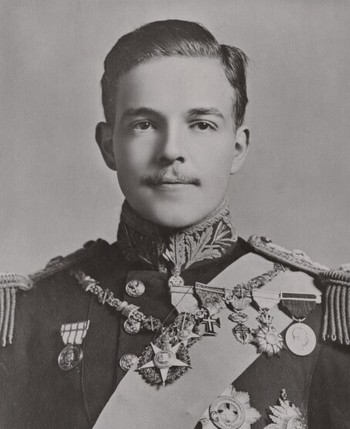
The very cherubic last King of Portugal. Unfit and unprepared to be the king, he was elevated to the throne after the assassination of his father, King Charles I, and his brother, Prince Luís Filipe, who was the heir to the throne up to that point, in the 1908 Lisbon Regicide. Overthrown by the 5 October 1910 revolution, which implemented the Portuguese First Republic. Was great-grandson of Maria II, who was herself the sister of Dom Pedro II of Brazil. Known as "The Patriot" for his total devotion to Portugal as a nation even after exile, and even when it was detrimental to efforts to restore him to the throne (such as insisting that royalists should join the Portuguese Army and fight in World War I rather than trying to use the war as an opportunity to overthrow the First Republic).
Duke Duarte Pío, the pretender to the Portuguese throne, says his lack of an official role doesn't frustrate him. The house of the Duke of Braganza sits in the noble town of San Pedro de Sintra, 40 kilometers from Lisbon.
Michael I, King of Romania
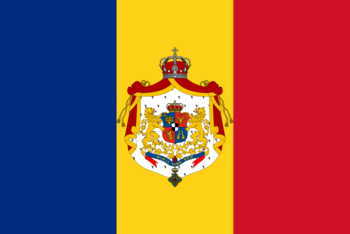
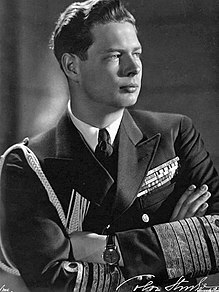
The last King of Romania, deposed by a communist regime in 1947 and forced into exile with his family. When Nicolae Ceaușescu's government was overthrown in 1989, Michael attempted to return to Romania, but was arrested and forced to leave the country again. In 1997, his citizenship was fully restored and he was allowed back into Romania, and several of his family's ancestral properties were restored to him. Michael died on December 5th, 2017, at his residence in Switzerland at the age of 96, in the presence of his youngest daughter Princess Maria.
He was a first cousin once removed of King Felipe VI of Spain, a second cousin of King Charles III of the United Kingdom, a third cousin of King Carl XVI Gustaf of Sweden,and King Harald V of Norway, a third cousin once removed of King Philippe of Belgium, King Frederik X of Denmark, and Grand Duke Henri of Luxembourg, and a fourth cousin once removed of King Willem-Alexander of the Netherlands, Prince Hans-Adam II of Liechtenstein, and Prince Albert II of Monaco.
The current claimant to the throne is Michael's eldest daughter, Princess Margareta. While Salic law at the time of her birth prevented women from succeeding the throne in Romania, King Michael designated Margareta his heir apparent in 2007, should the monarchy be restored.note She's very popular with the people of Romania, best known for her charity work. She also heads the Princess Margareta of Romania Foundation and has a degree in Sociology, Political Science and International Law from the University of Edinburgh.
Nicholas II, Tsar of Russia

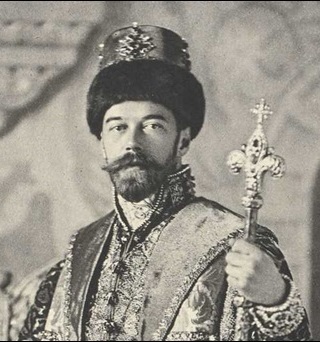
Last Tsar of Russia before the February Revolution and generally portrayed (today, anyway) as a nice but hopeless chap who was caught up in events too big for him to handle. An Orthodox Saint (specifically "Passion Bearer" in the Orthodox Church), along with his wife Alexandra and their five childrennote .
His full title happened to be: Emperor and Autocrat of all the Russias, of Moscow, Kiev, Vladimir, Novgorod, Tsar of Kazan, Tsar of Astrakhan, King of Poland, Tsar of Siberia, Tsar of Tauric Chersonesos, Tsar of Georgia, Lord of Pskov, and Grand Duke of Smolensk, Lithuania, Volhynia, Podolia, and Finland, Prince of Estonia, Livonia, Courland and Semigalia, Samogitia, Belostok, Karelia, of Tver, Yugra, Perm, Vyatka, Bulgaria, and other territories; Lord and Grand Duke of Nizhny Novgorod, Chernigov; Sovereign of Ryazan, Polotsk, Rostov, Yaroslavl, Beloozero, Udoria, Obdoria, Kondia, Vitebsk, Mstislav, and all the northern territories; and Sovereign of Iveria, Kartalinia, and the Kabardinian lands and Armenian territories; Hereditary Lord and Ruler of the Cherkass and Mountain Princes and others; Lord of Turkestan, Heir of Norway, Duke of Schleswig-Holstein, Stormarn, Dithmarschen, Oldenburg, and so forth, and so forth, and so forth.
Also happened to be the wealthiest saint in record, the estimated third wealthiest calculable historical figure ever (behind two great early American capitalists), and the wealthiest Russian Tsar. In a country where the majority of the population was illiterate and existed in effective serfdom, these may have been some of the grievances that ultimately got him removed and executed.
His wife, Alexandra (Alix of Hesse), happened to be a granddaughter of Queen Victoria, who passed haemophilia B to her and the Tsesarevich, Alexei. Infamously, she brought Grigori Rasputin to heal him, which, coupled with her being German (like many Russian consorts before her) at a time when Russia was fighting against two German powers, helped discrediting the monarchy in the eyes of the common folk.
Grand Duchess Anastasia (Romanova) is unquestionably the most famous of Nicholas' children. She was the youngest daughter, hence her common moniker "The Last Grand Duchess". When she wasn't found among the executed Romanovs, many thought she was alive and a number of movies have been made about her, and several women claimed to be her. As it turns out, she was among the executed Romanovs. Ah well. People thought she was alive decades before the Romanov burial site was found. The first whispers were as early as 1919. If anything, the "Anastasia lives" trope was far stronger and far more widely believed in the West before the tomb was found than afterwards. (If it matters, it's now thought that Anastasia actually was one of those recovered from the grave; the remains found later on were probably her sister Marie's.)
Maria Vladimirovna is the most widely acknowledged pretender to the throne of Russia. This great-great-granddaughter of Alexander II, who was Emperor of Russia until his assassination in 1881, now lives in Spain. Her father, Vladimir Kirillovich, was born in exile in Finland in 1917, and from 1938 claimed to be head of the Russian imperial family. By the time of his death in 1992 he was the last Dynast of the Romanov family; the succession to the claim to the throne has been disputed ever since.
Peter II, King of Yugoslavia


The last King of Yugoslavia. He ascended to the throne of Yugoslavia at the age of 11 following the death of his father, Alexander I, who was assassinated by a Bulgarian revolutionary in Marseille. Prince Paul, Alexander's cousin, served as regent until Peter came of age. During his reign, Paul and Prime Minister Dragiša Cvetković, under pressure by the Axis, joined the Tripartite Pact between Nazi Germany, Fascist Italy, and Imperial Japan, as a way to prevent them from invading the country. This resulted in a British-backed coup in 1941, which deposed the government and stripped Paul of his powers, allowing Peter to exit his regency. A week later, Germany, Italy, and Hungary invaded Yugoslavia and partitioned its territories among the Axis. Peter was forced to flee to the United Kingdom. Although he tried to contribute in the resistance movement, Peter was essentially a puppet, the symbolic head of the Yugoslav government-in-exile, and watched as the two principal resistance groups in Yugoslavia, the Serbian nationalist Chetniks and the Communist Partisans, fought against each other. The Partisans eventually won, and decided to abolish the monarchy by the time Yugoslavia was liberated in 1945. Peter moved to the United States, where he died of liver failure in 1970, after a long struggle with alcoholism and depression.
Peter's father, Alexander I, was maternally descended from the House of Petrović-Njegoš, which ruled Montenegro from 1697 to 1918 (the last monarch, Nicholas I of Montenegro, was Alexander I's grandfather). Meanwhile, Peter's mother, Maria, was a sister of Carol II of Romania (father of Michael I of Romania), and a descendant of British, Russian, and Portuguese royalty; she was a great-granddaughter of Queen Victoria, Alexander II of Russia, and Maria II of Portugal.
The heir of the Yugoslavian throne today is Alexander, Peter II's son with Alexandra of Greece and Denmark. Alexandra was the only daughter of King Alexander of Greece (who himself was a great-grandson of Queen Victoria, making Peter and Alexandra third cousins). It should be noted, however, that Yugoslavia no longer exists today, so this is merely a symbolic claim. At best they could be restored to the throne of Serbia, which was what the Karađorđević dynasty ruled over before the end of World War I saw the creation of Yugoslavia.
Oceania
Liliʻuokalani, Queen of the Hawaiian Islands

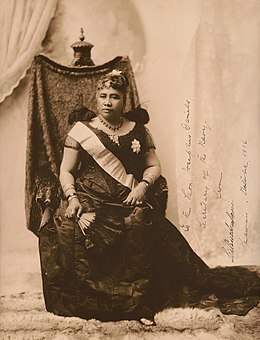
The last Queen of Hawai'i. Succeeding her childless brother King Kalākaua in 1891, her brief reign was filled with turmoil. She attempted to write a new constitution to bolster the economy and strengthen the monarchy, but pro-American forces overthrew the monarchy in 1893. Liliʻuokalani was placed under house arrest in the ʻIolani Palace and forced to abdicate fully in 1895. While the Republic of Hawai'i restored her civil rights and offered her a pardon the following year, the deposed queen instead fled to Massachusetts to be with her husband. Hawai'i was annexed by the United States in 1898, and many Hawaiian royals boycotted the event in protest.
Liliʻuokalani lived the rest of her life as a private citizen. An accomplished songwriter and author, she penned many great works about the history of her homeland. During her imprisonment, she transcribed "Aloha ʻOe", a song she previously wrote as a princess, which has come to be known as the most iconic Hawaiian songs, and a symbol of her lost country. Liliʻuokalani passed away at her home at Washington Place, Honolulu at the age of 79. She was later interred along with her family members at Kalākaua Crypt at the Royal Mausoleum of Mauna ʻAla.
There are at least two distinct claimants to the Hawaiian throne; Quentin Kawānanakoa is the senior male descendant of Prince David Kawānanakoa, who had been third in line to the throne at the time of the monarchy's overthrow.note Quentin himself however doesn't really acknowledge the claim, claiming his title as a prince is merely honorific. Secondly, Owana Salazar is the current claimant of the House of Laʻanui, a branch of the Hawaiian royal family with ties to the original House of Kamehameha.
